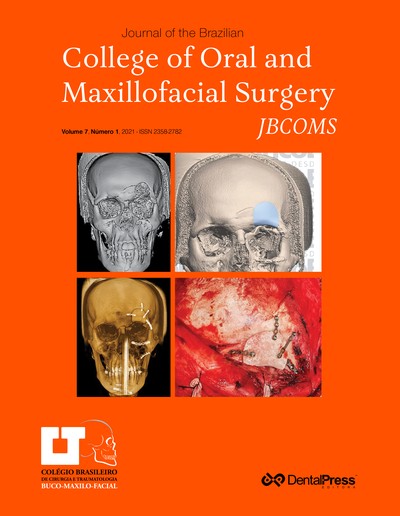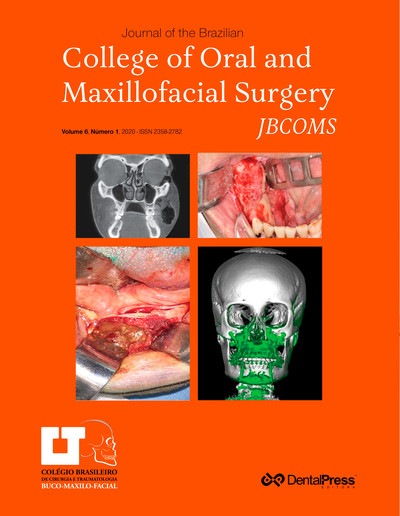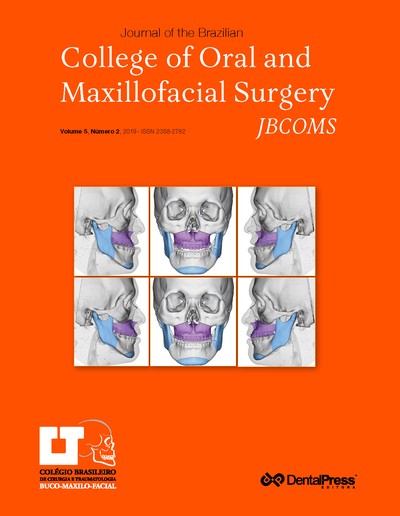
Surgical treatment of zygomatic-orbital fracture sequelae with autogenous graft and alloplastic material
Carlos Eduardo Mendonça Batista, Thalita Medeiros Melo, Iluska Castro Dos Santos, Jhonatarraty Fonseca De Sena, Éwerton Daniel Rocha Rodrigues, Eider Guimarães Bastos
The zygomatic-orbital fractures are common facial injuries and their treatment has been a challenge for the surgeon. As a result of this type of trauma, significant complications may occur, including diplopia, enophthalmos, dystopia, restriction of ocular motility, loss of zygomatic projection, telecanthus or amaurosis. Early diagnosis and proper treatment are intended to restore order and orbital volume, function and aesthetics of the area. However, misdiagnoses or an inappropriate initial treatment can lead to delayed repair and secondary complications. Diagnostic capabilities have dramatically evolved and now the surgeon can rely on three-dimensional computerized tomography imaging, which can be used to make a biomodel for prior planning. The availability of numerous biomaterials for bone reconstruction contributed to the evolution of the surgical management of orbital fractures. Among the options for secondary reconstruction may be mentioned the use of: autogenous materials, such as skull cap; halogen materials, which are rarely used; and alloplastics, as titanium screen. The autogenous tissues still remain as standard material. The objective of this study was to describe a case report through the use and advantages of autograft combination with alloplastic grafts in orbital reconstruction, with the aid of rapid prototyping biomodel.
Keywords: Orbit. Orbital fractures. Transplantation. Autologous.
How to cite: Batista CEM, Melo TM, Santos IC, Sena JF, Rodrigues EDR, Bastos EG. Surgical treatment of zygomatic-orbital fracture sequelae with autogenous graft and alloplastic material. J Braz Coll Oral Maxillofac Surg. 2018 May-Aug;4(2):52-8. DOI: https://doi.org/10.14436/2358-2782.4.2.052-058.oar
Tuesday, April 23, 2024 21:52










